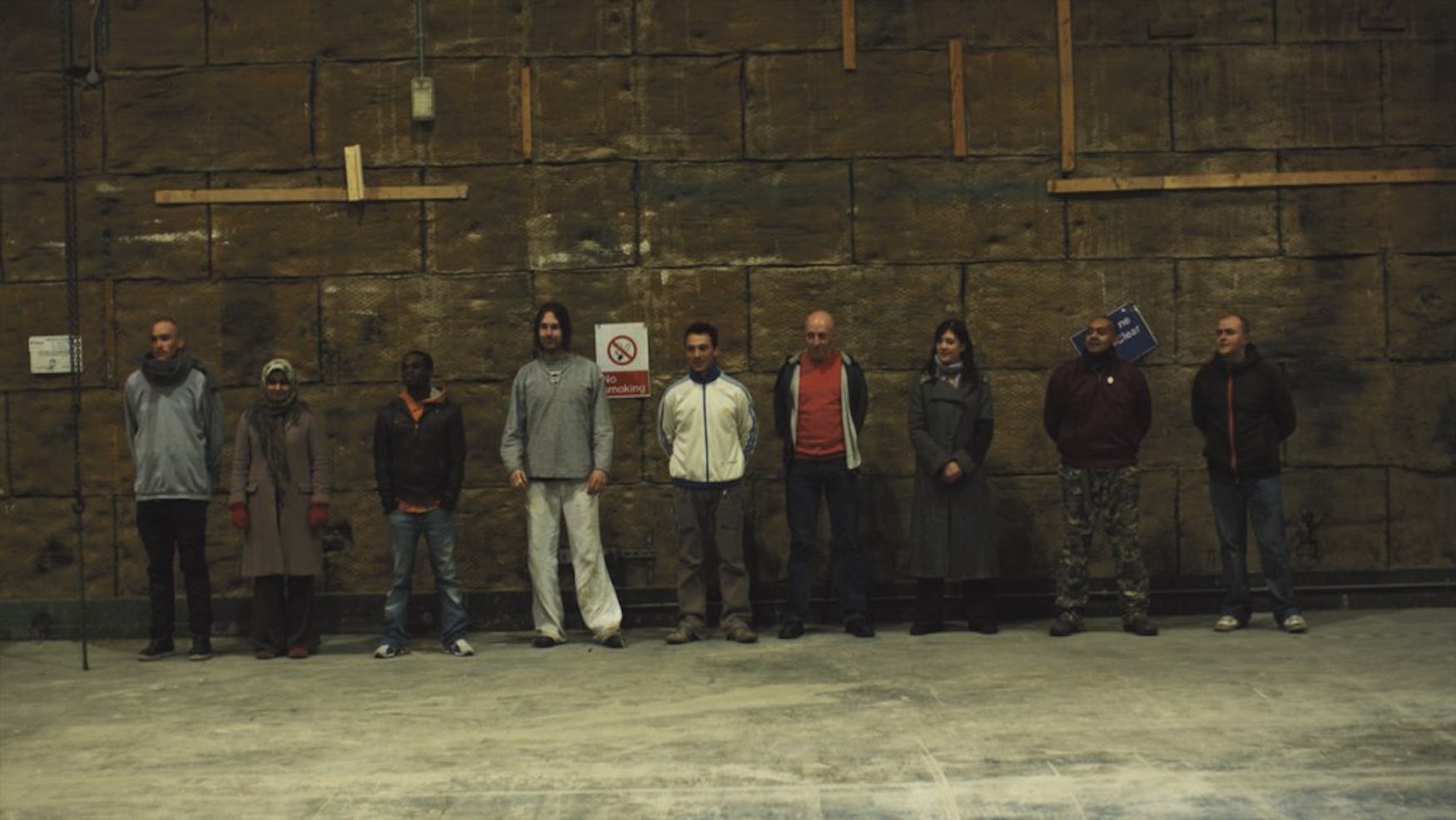Video takes atypical approach to topic of bullying
Gillian Wearing’s video Bully (2010), currently on view at the Rose Art Museum, is an emotional roller coaster—mostly running downward.
The eight-minute installation in the Rose Video Gallery is not your typical representation of the effects of bullying. Instead of portraying a scene of bullying in action, Wearing depicts a reenactment by some sort of improvisation group (it is not clear who they are) of an event that happened in one of the members’ childhoods. But this reflective reenactment is perhaps more heartwrenching than if the video had been portrayed a scene in real time.
The video is set in what looks like a warehouse and opens to a scene with people standing against a wall, listening to an instructor. The instructor describes the improv they are about to put on as an “active tableau of a common experience [the man standing next to him—James] had of a bullying experience when he was young.” He tells the participants that James will act as a director in order for them to recreate the scene. “He’s gonna work with it until such time when he actually believes in it,” the instructor said.
After James tells each person which character to be and how to embody that character, the acting starts almost immediately. There are the bullies, the victim and the bystanders. The scene progresses from some hurtful language thrown around at a kid on the playground to physical and verbal abuse. The bullies end up following the victim as he tries to leave the situation—trailing him very closely while yelling expletives and insults at him. Finally, one kid starts throwing a tennis ball at him.
After a few throws of the tennis ball, James ends the skit and takes the participants assigned as bystanders and the bullies and lines them up facing each other. James is then so overcome with emotion that he walks slightly away from the group. The instructor tells him to talk to the bullies and bystanders as if they were his own bullies all those years ago. “I don’t think you realize how sh*tty you made me feel and how you affected the rest of my life,” he said to the bullies.
The video was incredibly uncomfortable and heartbreaking—a huge achievement on Wearing’s part. The act-within-an-act somehow made the message of the video more moving. It wasn’t preachy. It was just displaying a rendering of an event that occurred—and it felt earnest. The camera, which slightly shook all the while, added to the informality of the performance and made it feel less staged.
The very short but very powerful Bully is definitely worth a visit. It takes a topic that is very prevalent in today’s society—something most people can relate to in some way—and makes the subject estranged and nuanced in a way that makes you think.



Please note All comments are eligible for publication in The Justice.